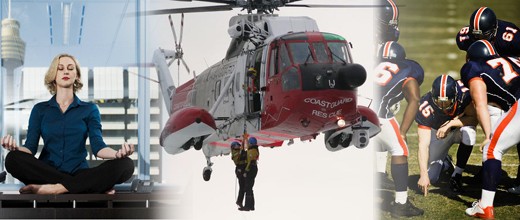Website sections:
Current section's content:
- You Can Manage and Program Creativity
- Creative Abilities and Creative Thinking Skills Management
- Briefly About CreativityModel Method Usage
- CreativityModel Method Usage Opportunities and End-User License Agreement
- Current Version of CreativityModel Method
- CreativityModel Method Version Changes
- CreativityModel Method Glossary
- CreativityModel Method Abstract
- Explanation of the Method's Component Parts and How the Component Parts Interact
- Explanation of How the Method's User Achieves Results
- CreativityModel Method - Generate Dots, Connect the Dots
- CreativityModel Method Usage Areas
- The Artist in You
- Growth of the Artist in You
- The Result Getter in You
- Applying the Result Getter in You
- About Choice Supported Creativity Usage
- The Problematic Side of Business Creativity
- Creativity Management and Business Creativity
- Sales CRM Software Development Example
- Why Does Creativity Management Matter and What Can You Do About This?
- Goal Oriented Creativity Management and CreativityModel Method
- Goal Oriented Creativity Management and Your Personal and Professional Life
- Teenager, Version 1 - Confusion
- Teenager, Version 2 - Career Development and Life Management
- Managers, Version 1 - Zigzagging Business Development
- Managers, Version 2 - Innovation Management and New Product and Service Development
- The President, Version 1 - Some of It Did Happen
- The President, Version 2 - Self-Expression, Conflict Resolution, Creativity and Leadership
- CreativityModel Method Development Background
- Further Development of CreativityModel Method




















Goal Oriented Creativity Management and Your Personal and Professional Life
Contents
- Abstract
- Why Would You Want to Learn to Manage Your Creativity?
- Making CreativityModel Method Useful
- Further Development of CreativityModel Method and Relevant Opportunities
- Creativity Management and CreativityModel Method
- Combining Goal Oriented Creativity with Choice Supported Creativity Usage
- Descriptive Articles
Abstract
I have looked into the mechanics of creativity quite a bit - what makes it work, and where and how to use it for the best results. I have been mostly interested in creativity usage for personal and professional project development purposes, and in creativity usage in business and other professional environments.
I came to the conclusion, that creativity usage for personal and professional project development purposes, and perhaps all creativity usage, is closely related to addressing and negating, in combinations, the following question: what do you want to achieve with this?
Business creativity focuses on building results around the answers to the above question. The more self-expressive artistic creativity is, the more it tends to negate this question's role in the creative processes. The self-expressive artistic creativity focuses more on exploring and intermittently providing answers, or material for finding answers, to the question: what do you want to say with this?
In the process of exploring creativity usage concepts, I put together a creative thinking management method, CreativityModel Method. Now I am looking for people who would want to continue this work and carve out their own opportunities in creativity management related areas. These people can reside in different countries and cultures - creativity usage is universal, no matter how different individual circumstances may be.
CreativityModel Method principles can be learned, and this Method itself can be used in different ways and for different purposes. I have chosen to focus on an area that causes most distress in ways that seem to go unnoticed: usage of self-expressive creative approaches in circumstances that require goal-oriented creativity usage. Very many people can be negatively affected by the decisions made and actions taken in this manner. However, other people may prefer to use CreativityModel Method for different purposes.
This article addresses these topics. Further, this article is the first part of a seven article series that addresses life management, career development, business management, innovation management, and even high level government operations (based on real life). These articles have a common thread that is related to CreativityModel Method usage. From a teenager to an employee, to president of a company or a country - CreativityModel Method usage principles are the same. So, your learning to use them is worth the effort, because you can use these creativity management skills throughout your life.
Further, while these articles address longer-term undertakings and projects, CreativityModel Method usage principles apply equally well to everyday tasks.
Why Would You Want to Learn to Manage Your Creativity?
Why would you want - and need - to manage your creative thinking skills? What does creativity management even mean?
In this article, I will provide answers to these questions from CreativityModel Method usage perspective. Then again, CreativityModel Method is a bunch of unproven theory. Why would people be interested in it? Why should you be interested in it?
In a few words: usefulness and universality.
The principles that CreativityModel Method addresses affect very many aspects of your personal and professional life. How you apply these principles affects how successfully you can handle tasks that involve goal-oriented or self-expressive creativity usage. In your everyday life, most decisions that you make and most actions that you take involve combinations of these two types of creativity usage.
Making CreativityModel Method Useful
Before proceeding any further I will add couple of thoughts that I consider to be important to CreativityModel Method usage and development.
- As long as CreativityModel Method remains an abstract theoretical concept for you, you probably don't get much out of it. The more you can relate CreativityModel Method principles to your own life, the more likely it is that you will find usage of these principles meaningful.
- Whether or not CreativityModel Method will be developed further depends on you and other visitors of this website.
So, you can gain the most from CreativityModel Method by understanding how it is related to your own decision-making processes and actions, and other aspects of your life. This requires you to do some work. Above all, you have to evaluate CreativityModel Method so, that it is understandable and you can decide for yourself, which creativity management patterns and principles work the best for you. You can do this, and it's worth the efforts.
Additionally, by exploring CreativityModel Method in an involved manner, you can influence further development of this Method.
Further Development of CreativityModel Method and Relevant Opportunities
You can learn to use CreativityModel Method in your own personal and professional life. You can also use CreativityModel Method as a source of professional advancement opportunities.
As a scalable and updatable platform, CreativityModel Method can be developed further so that it creates opportunities for many people in different fields. However, implementation of this concept is likely to require quite a bit of work. Among other things explanations, examples and other types of solutions are needed, that are easier to use than the current, formal version of CreativityModel Method itself is. Additionally, for example, computerized training exercises and programs could be created that help to learn and develop further both goal oriented creativity and choice supported creativity usage skills. CreativityModel Method can be used for other computer application development related purposes as well.
If any of this seems interesting to you, let me know. I am not planning to develop CreativityModel Method further in the near future myself, but if I happen to meet people online who are interested in this concept, I will certainly be interested in exchanging ideas on it.
I have developed CreativityModel Method further primarily in a self-expressive manner. I started out wanting to understand how creative processes work, how computer usage can affect them, and what can I do to manage my own creativity better. I spent a lot of time and effort on this Method's development, but I also learned a lot. For me, this work has been meaningful, enjoyable and worthwhile.
I am using CreativityModel Method principles myself. Further, it is likely, that I will use and develop this Method further when I will continue my studies and will work on my graduate degrees, but that is planned to take place years from now.
Working on CreativityModel Method has helped me to further define my own longer term objectives and has otherwise benefited me in different ways already. Above all, working on CreativityModel Method has made my life more insightful and meaningful.
The benefits that CreativityModel Method can produce extend way beyond my life - and that's the reason why I'm writing this article. CreativityModel Method is a potentially endless source of opportunities and benefits for other people as well. However, these opportunities and benefits are for those people who make them happen.
Truly valuable results often require labor of love.
Creativity Management and CreativityModel Method
So, let's continue with exploring and explaining some CreativityModel Method usage aspects.
Creativity management is management of creative thinking skills and other mental processes. You can manage your own creative thinking skills within you abilities, experience and expertise levels. In a teamwork environment you can also manage other people's creative thinking skills.
The overall objective of creativity management is production of optimum level results in instances when creativity usage is involved. That is, creativity management helps to optimize creativity usage results within you abilities, experience and expertise levels.
There is also another side to creativity usage - avoidance of problems that mismatched creativity management approaches cause.
Creativity management is relevant to everyday personal and professional life and especially to situations when something new is created. Depending on the context, new may mean "new to you," or to the audience or target markets. That is, new does not have to be something that has never existed before.
CreativityModel Method creativity management method addresses goal oriented business creativity and self-expressive artistic creativity usage in combinations. Both are needed in personal and professional everyday life.
This means also that CreativityModel Method can be used for different purposes. As is stated above, I am focusing here on an area that in my opinion causes problems and affects many people: usage of self-expressive creative approaches in circumstances that require goal-oriented creativity usage. Somebody else might prefer to focus on, let's say, self-expressive artistic creativity training, or other aspects that are related to CreativityModel Method usage.
Combining Goal Oriented Creativity with Choice Supported Creativity Usage
So, CreativityModel Method differentiates between goal oriented creativity and self-expressive choice supported creativity.
Goal oriented creativity is especially well suited for business environment, life management, career development and other undertakings small and big that require goal setting and achieving. Self-expressive, choice supported creativity is suitable for artistic undertakings.
For the best results both goal oriented creativity and choice supported self-expressive creativity should be used in combinations. However, one of the two creativity management approaches should be used for putting together an undertaking's structure.
Every undertaking - in CreativityModel Method context I call them all projects - has a structure, whether you think about it or not. In most instances that structure is either goal oriented or self-expressive. When goals need to be achieved, goal oriented structure usage is more likely to lead to achievement of goals than self-expressive structure usage is.
In broad terms, here's how you can use goal oriented creativity, combining it with choice supported creativity usage.
- Select and set the goals. As applicable, do pooling for goals before selecting them.
- Do some evaluations and planning. With the planning process, proceed from the goals to the starting point in order to gain an understanding of what are the main milestones and resource needs of your project, and what you want to achieve with each milestone.
- So, if goals are, let's say, Milestone number 10, then first put in place Milestone number 9 (that is, 10 - 1 = 9), then Milestone number 8 (that is, 10 - 2), and so on. Something like this:
- - Goals - 1 Milestone (the milestone that precedes the goals): Identify, what needs to be done and achieved before achieving the goals and, more specifically, what milestone comes right before reaching the goals.
- - Goals - 2 Milestone: Identify, what needs to be done and achieved before the previously identified Goals - 1 Milestone.
- For each milestone investigate not only what is required for achieving the milestone, but also what is required for successful implementation of that particular milestone. That is, getting to the goals is only part of the story. Having an understanding of what is required for functioning successfully in each milestone is as important.
- Continue this way until your starting point. Do research as necessary.
In most instances your planning process doesn't have to be perfect, however perfection is defined, in order to help you to gain insights into what is needed for implementation of the plan.
Establish such "default plan" from the goals to the starting point. You can implement this plan's milestones "by default" unless better alternatives emerge during implementation processes.
In reality, plans change. So, within each milestone leave room for at least partially unplanned, choice supported, self-expressive creativity usage. While choice supported self-expressive creativity may not seem as efficient by its nature as goal oriented creativity is, it allows to find new and differing solutions, and its usage within the goal oriented structure has other benefits as well. Such creativity usage combinations provide to the participants opportunities to express their preference and to proceed so that participation is more meaningful for them.
Further, this approach allows you to determine, how much planning you need to do for effective implementation and resource identification purposes, and how much micromanaging you need to do. For example, depending on the participants expertise levels, you could leave the participants lots of implementation related freedom, as long as each milestone goals are reached. These principles apply to both group settings and to your working alone, where you are the only project participant.
For planning purposes, you should specify what you are dealing with and learn about the options and constraints. This applies even if you are familiar with the project related subject matters. If you are not familiar with them, this approach allows you to allocate your time and efforts for becoming familiar with the necessary material.
The goal oriented planning process that is described above should, for the most part, take place from the goals toward the starting point. Implementation, of course, takes place from the starting point towards the goals.
During implementation you, and as applicable other participants, can make changes to the "default plan" as well. CreativityModel Method principles apply in such instances, too.
This is the big picture. CreativityModel Method addresses the relevant material in much more detailed manner.
So, in a nutshell, goal oriented creativity management consists of identifying the goals, milestones and resources that most likely will be necessary for reaching the goals, and on implementing the plan by leaving room for choice supported self-expressive creativity usage.
With training, you can learn to do this faster, effectively and efficiently both for small and for large undertakings, whether you work alone or with a team and need to communicate and coordinate things with other people, and whether you need to do just a little bit or a lot of research.
Descriptive Articles
As was mentioned above, this article is the first part of a seven article series on neglecting versus using goal oriented creativity management principles. I find the latter to be especially significant, because it can cause problems to people, companies and organizations.
In my opinion, most people do not lack artistic, self-expressive, choice supported creative thinking skills. Training self-expressive creative thinking skills can be beneficial and can lead to more meaningful life experiences. So, while I personally do not see lack of self-expressive creative thinking skills necessarily as a problem, I would welcome if other people would use CreativityModel Method for addressing self-expressive creative thinking skills and, for example, for development of relevant online and/or off-line training materials.
Nevertheless, usage of self-expressive creative thinking principles in circumstances that require goal oriented creativity usage, and vice versa, is what can cause problems. This is avoidable and contains an area where potential problems can be turned into opportunities. So, that's the primary focus of these articles.
There's one thing that I can say with certainty: the content of these articles is highly relevant to your life, no matter who you are.
In addition to this introductory article, this series contains three sets of articles, each of which contains two versions, Version 1 and Version 2. Both Version 1 and 2 are examples of circumstances (that I call projects) that require goal oriented handling. Each Version 1 is an example of a scenario where goal oriented creativity principles should be used, but are not being used. Each Version 2 is the same scenario, except that this time goal oriented creativity is being used. The consequences are different, too.
Both creativity management approaches, goal oriented creativity and choice supported creativity, can be learned and taught.
Perhaps you are very good at using goal oriented creativity and choice supported creativity principles already, both separately and in combinations. If not, you have a choice to make. You can choose to ignore this material, or you can choose to learn and then master these creativity management principles within your personal experience and expertise levels.
Either way, these principles apply to your life.
Below is a list of the descriptive articles.
- Teenager, Version 1 and Teenager, Version 2;
- Managers, Version 1 and Managers, Version 2; and
- The President, Version 1 and The President, Version 2.
- In addition, two software development related articles on this website form a somewhat similar pair.
- Sales CRM Software Development Example article describes a choice supported creativity driven decision making process in IT, in situations where goal oriented creativity should be used instead. What CRM Sales Software Is Right For You? article describes a goal oriented creativity driven software selection and development process.
The content of these articles may seem abstract and confusing at first. Try to get through this possible level of abstraction and confusion and compare the decision making and task handling structures in the Version 1 and Version 2 articles. Do you notice the similarities?
Is this going on in your life, too? Do your own decision making processes resemble more Version 1, or Version 2?
The beauty of it is, that you can change a lot about it, if you want to.

